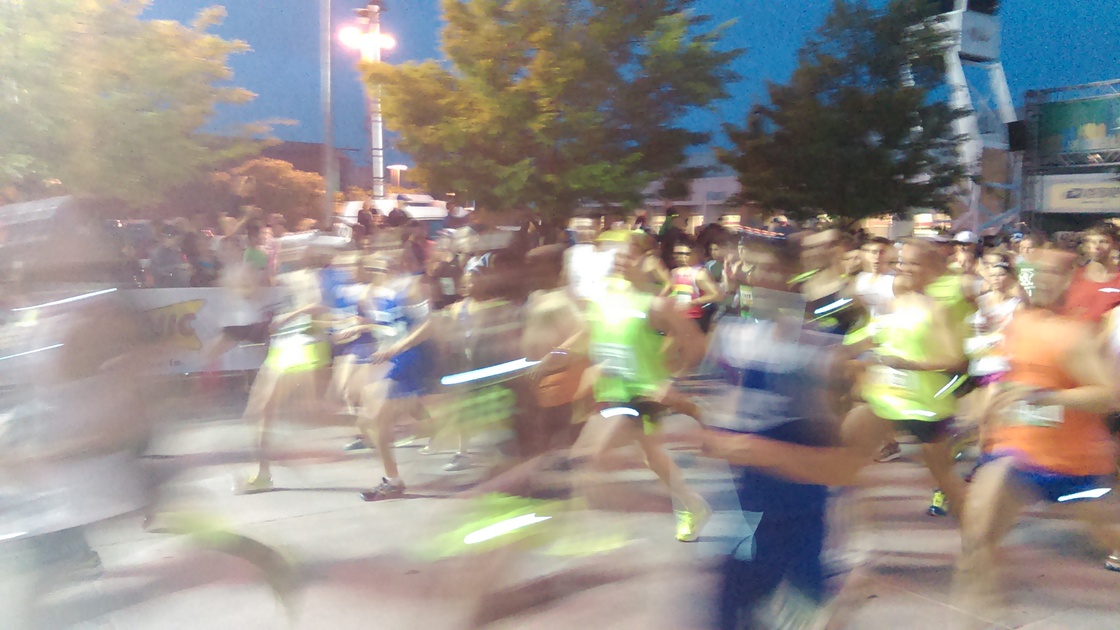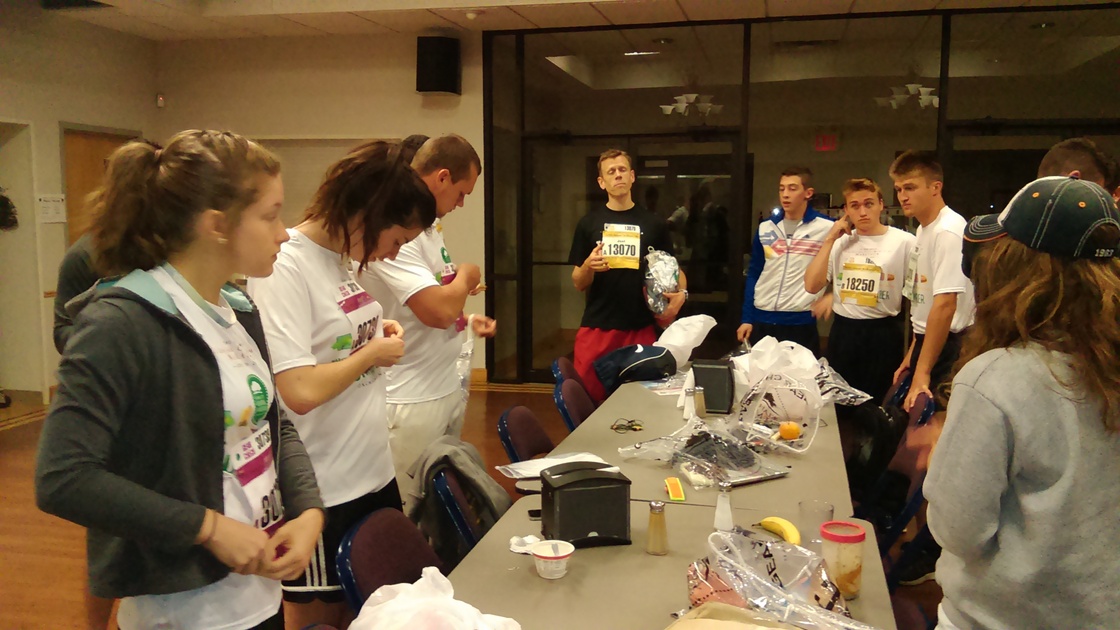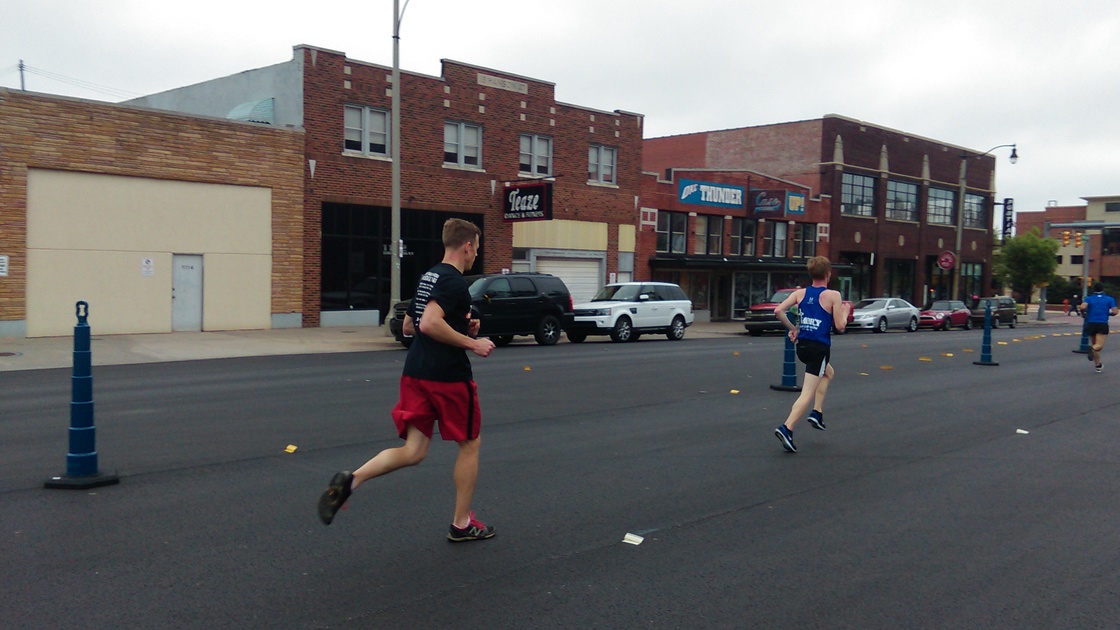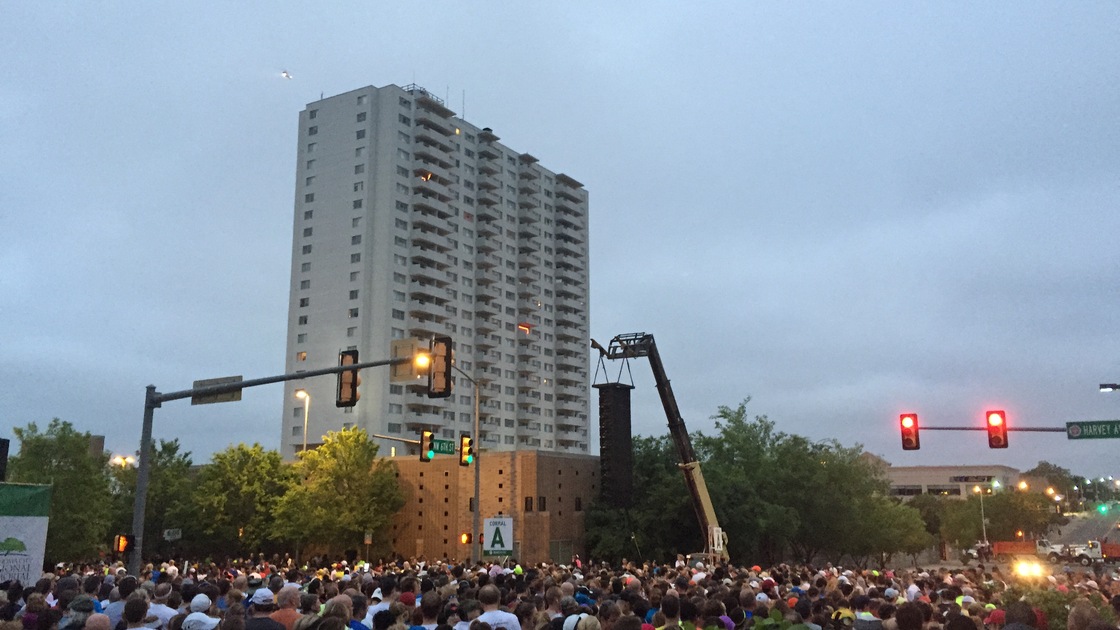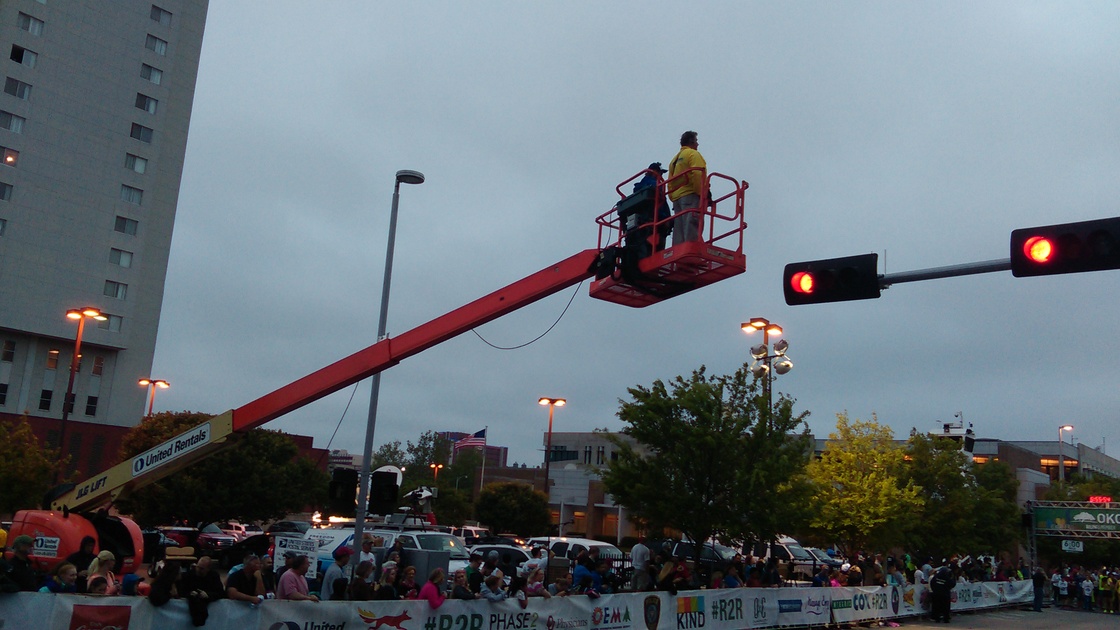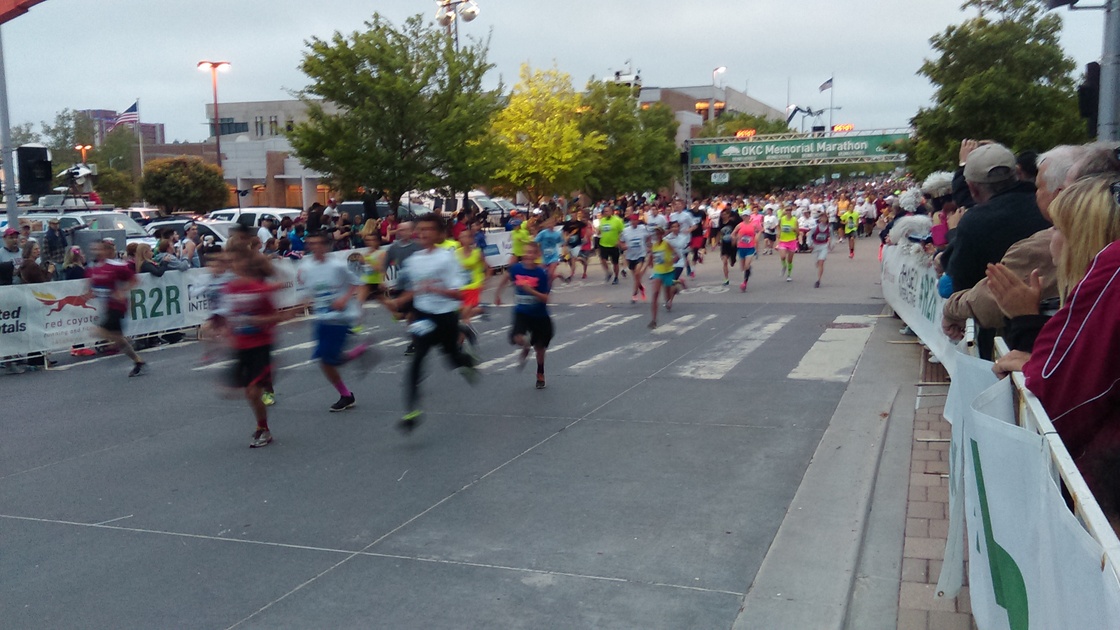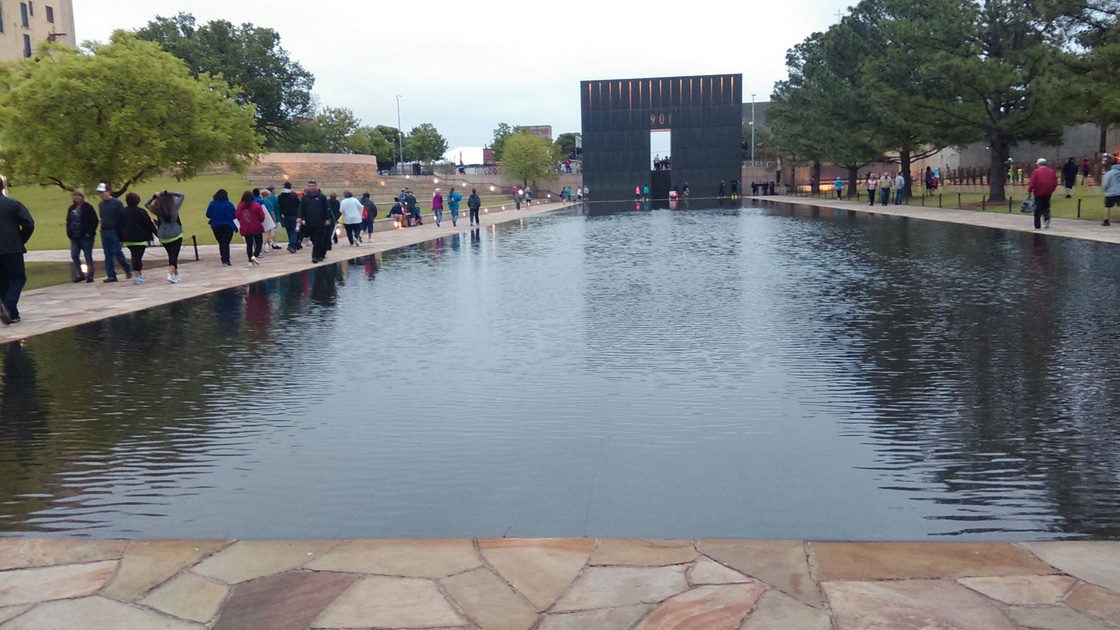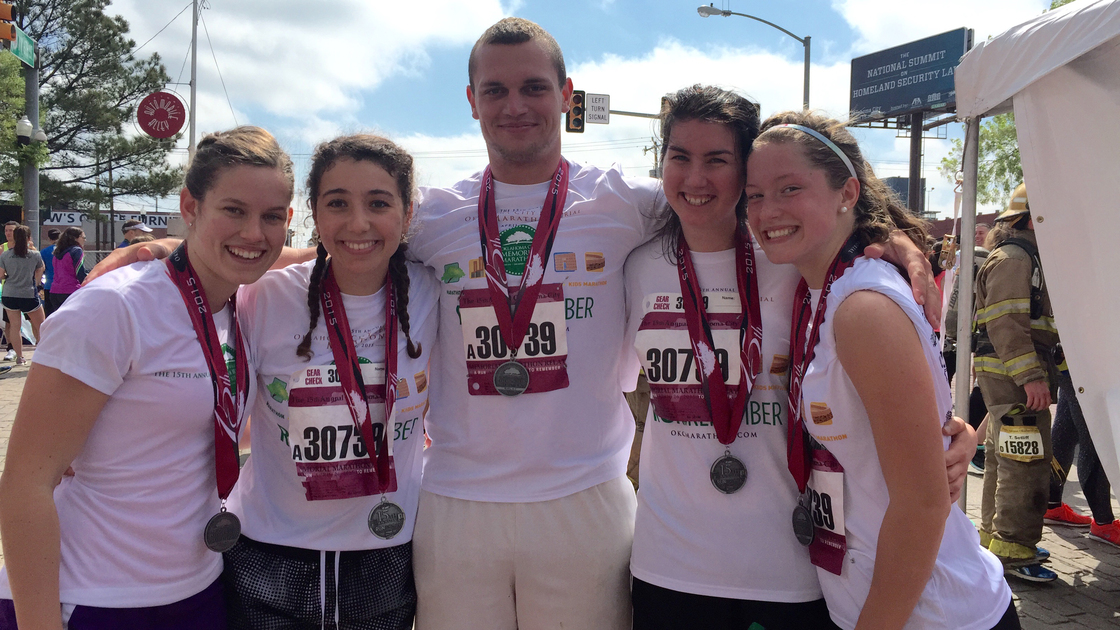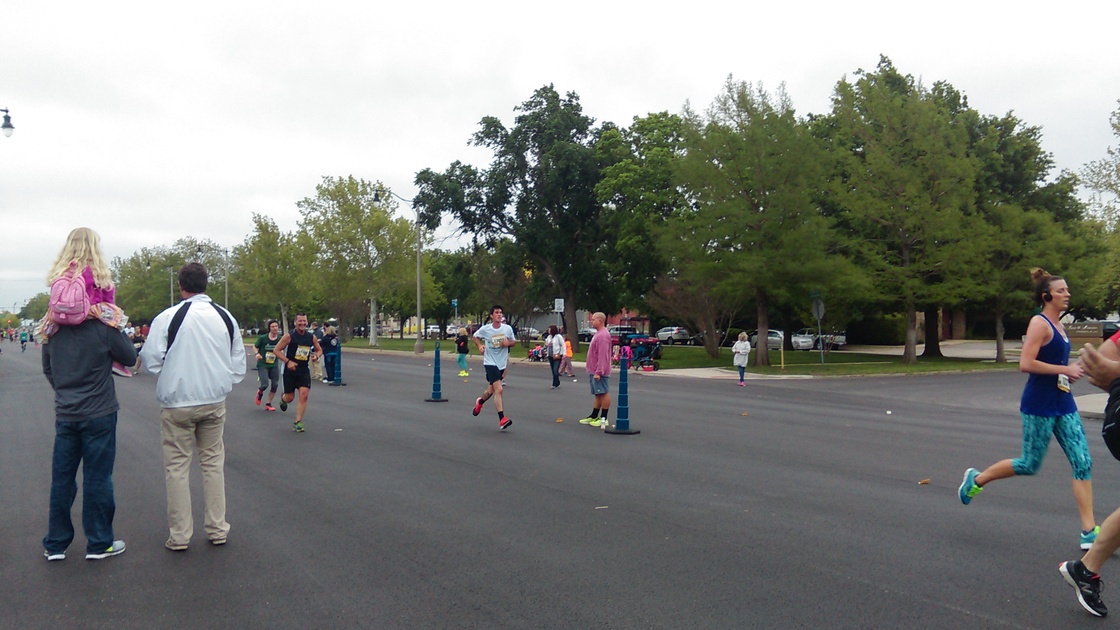EDMOND—Silence and stillness fill the streets. People pack the downtown intersection, yet you could have heard a penny drop. In 1995, these streets were filled with fire, smoke and rubble.
This is downtown Oklahoma City 20 years after the bombing of the Alfred P. Murrah Federal Building. On that day, a terrorist murdered 168 men, women and children. Each year, tens of thousands of people observe 168 seconds of silence to remember the victims of the bombing before they run the Oklahoma City Memorial Marathon. This year on April 26, 25,500 people are here to run a marathon, half-marathon, relay or 5K to accomplish a personal challenge and to recall a tragic chapter of Oklahoma history.
“It’s more than just another marathon. It’s a celebration of life,” the memorial’s website reads.
The theme of remembering the attack resonated with AC Sophomore Justin Wainwright.
“I realized that it’s not about running for yourself. It’s about running for everyone else around you,” he said. “It’s not a run to get fit; it’s a run to remember.”
I was among this mass of runners, volunteers and spectators with 15 other Herbert W. Armstrong College student runners and physical education instructor Joel Hilliker to witness this event. I had planned to participate but suffered a knee injury a week and a half before the race. This put me in the role of spectator—and reporter.
Sophomores Rachel Culpepper, Brandi Davis, Panayiota Tolis and Justin Wainwright and junior Danielle Underwood entered as a relay team. Sophomores Zac Bush, James Lowry and Maree Tolis ran the half-marathon, along with freshmen Adiel Granados, Rachel Grellet, Johnathan Mansour, Josue Michels and Kieren Underwood and junior Erica Irwin. Freshman David Michels ran the marathon.
The AC runners had been preparing for the race for weeks beforehand. Mr. Hilliker incorporated interval running into the freshman and sophomore P.E. class. Runners used their Sundays to take runs of an hour or more. One of my five or six long training runs was a 19-mile road run with freshman David Michels. On Coltrane Road, northeast from campus, we ran past green pastures, longhorn cattle, a traditional log cabin, a vintage caboose and the scenic Lake Guthrie. Other students trained for the marathon even in the rain.
On race day, we assemble at the John Amos Field House for the 30-minute drive to the city ahead of the 6:30 a.m. gun time. We have a quick breakfast and Mr. Hilliker gives some final advice and encouragement to the runners.
We arrive in the city and make our way to our designated corrals. After saying goodbye to the runners, I make my way to the starting line on North Harvey Avenue, slipping through thick crowds of runners and spectators. During this time, the 168 seconds of silence begins.
People are here to run, to improve themselves, to overcome, to build memories with loved ones, but especially, during these three minutes, thoughts turn to something even bigger than that. These runners are here to memorialize the needless death of 168 of their family, friends and countrymen. They will run past 168 banners along the marathon route, each with a name of a man, woman or child killed by terrorists, to remind them why they run. Yet this race is not just to memorialize the dead; it’s to celebrate the living.
The race is approaching; the air is electric. Around the start line, the thunderous beat of the Oklahoma City Thunder drumming crew adds to the upbeat, festive environment. The speakers boom out the voice of the announcer, who is suspended high above the start line on an aerial lift. A local tv presenter sings the national anthem. She then goes back to a corral to run the half-marathon straight afterward.
The race is about to begin. The crowd and the runners count down for the wheelchair racers, who then burst out of the start line. Five minutes later, the crowd and runners count down the start of the half-marathon and marathon.
“10, 9, 8, 7, 6, 5, 4, 3, 2, 1…BANG!”
Thousands upon thousands of runners stream across the line. It looks as if a dam holding back the Mississippi River has burst its banks. Some sprint out of the starting block; others stroll. Some wear cutting-edge running gear; others wear casual wear; a few wear full firefighting gear. All are there to remember.
I watch them stream past for more than 20 minutes as music plays from the speakers. I yell out and wave to my fellow students as I see them run past.
I walk two streets down through the Oklahoma City National Memorial, past the long, still reflecting pool to the finish line on North Broadway Avenue. 5K runners soon begin crossing the finish line. Before long, the first half-marathon finishers begin to arrive. I walk a few hundred yards from the finish line to greet my friends as they run past. Thousands of everyday people run, roll and walk by. I am standing nearby a volunteer traffic director, who encourages and claps for each and every runner that comes by. I saw one woman pushing a friend of hers in a racing wheelchair. It looked like she could barely move at all, but her face beamed with pure, unrestrained joy. It was like she was flying for the first time.
I applauded my fellow students as they ran by. For most of them, this was their first official race.
The last person I saw run to the finish line was my friend David. He finished his first full marathon in 4:44:05, beating his goal time by about a minute. He seemed to forget all of the heat, pain and exhaustion as he sprinted across the finish line.
I returned to Herbert W. Armstrong College that day with a rich new experience. I saw people join together and interact with each other in a way that rarely happens. The people of Oklahoma are taking a great crime and tragedy and using it to bring their community together through this race to remember.
Student Perspectives
Gino Chi, Freshman
“You really need to be prepared mentally and physically and train months before the marathon.”
Maree Tolis, Sophomore
“Encouragement and training are keys to success. Get lots of advice and implement it. Also, relax, and have fun! Don’t stress and just enjoy the challenge.”
Johnathan Mansour, Freshman
“I learned how important it is to maintain a strong focus, tuning out any distractions and really concentrating at the task at hand.”
Danielle Underwood, Junior
“I learned that things that you may avoid because they seem too daunting can end up being really enjoyable and rewarding.”
Zachary Bush, Sophomore
“I learned a great deal about having vision…. Though the race was tough, the overwhelming sensation of accomplishment once I crossed the finish line was exhilarating, and that is what kept me going during the race… Ever since then I have been trying to apply that lesson to everyday life.”
